Discover Draft Zero: a screenwriting podcast
Draft Zero: a screenwriting podcast

Draft Zero: a screenwriting podcast
Author: Chas Fisher and Stuart Willis
Subscribed: 1,728Played: 16,913Subscribe
Share
© Presented by Chas Fisher & Stuart Willis. Creative Commons Attribution-NonCommercial-ShareAlike 4.0 International License.
Description
Two emerging screenwriters – Chas Fisher and Stuart Willis – try to work out what makes great screenplays work. Discovering what it takes by analysing what successful writers put on the page.
125 Episodes
Reverse
What happens when a group of filmmakers play a ragtag group of filmmakers in a gritty sci-fi horror? "Ignite the fire within and explore unknown territory" - Werner Herzog. This episode is unusual, even by Draft Zero standards. It's an "Actual Play Podcast" where Chas, Stu, & Mel are joined by Kim Ho and Luke Clark to play MOTHERSHIP, the sci-fi horror game we talked about in episodes DZ-121 and DZ-122. Stu is the GM while everyone else is a ragtag crew of freelance filmmakers. We debrief the experience (so far) at the end of the episode) Mel plays Zara, the glamorous face of the operation. Chas plays Winston, the cynical and egoistical "photojournalist". Kim is Cal, the scrappy scrounger and sound recordists, while Luke is Tarsos the steadfast producer of the group. The crew are enlisted to record a sensationalist report on a missing corporate president before the mercenary retrieval team arrives. And yeah, this means we're soft-launching yet another project that's called 1d0, which looks at how we can use tools from ttrpgs in screenwriting… and vice versa. To get future episodes go to: http://www.1d-zero.com/ CHAPTERS 00:00:11 - Intro for DZ Listeners 00:01:51 - Meet the Snortin' Betsy 00:06:22 - A Mansion Most Vile (Ep 1) 01:52:32 - Debrief through TOMBS RELATED EPISODES DZ-121: Escalating Antagonism 1: Sinners DZ-122: Escalating Antagonism 2: Rebel Ridge + Meet the Parents LINKS Tuesday Knight Games Joshua Kramer: A Mansion Most Vile Alewood Games: Arkyvr Nobody Wake the Bugbear Campaign Supplies More Draft Zero is brought to you more often by our awesome Patreons. Especially Lily, Paulo, Alexandre, Malay, Jennifer, Thomas, Randy, Jesse, Sandra, Theis, and Khrob. Please considering rating or subscribing to us on Apple Podcasts or sharing us on the Social Medias! We like finding new listeners. We are @stuwillis, @mehlsbells and @chasffisher on Twitter. You can find @draft_zero and @_shotzero on Instagram and Twitter. SUBSCRIBE TO SHOT ZERO via Substack SUBSCRIBE TO 1DZERO via Substack ACKNOWLEDGES via our website: https://draft-zero.com/2025/1dz-01/
How can you apply horror ideas to action and comedy? In this episode Chas, Stu and guest Kim Ho continue their exploration into the power(s) of antagonism and how focusing on them can develop story. While Part 1 looked at the horror film SINNERS, in Part 2 we venture into genres beyond horror with the action-thriller REBEL RIDGE, and the comedy classic MEET THE PARENTS. To both these films we apply the generative story framework TOMBS* (Transgression - Omens - Manifestation - Banishment - Slumber) and are surprised at just how well it maps. *TOMBS comes from the MOTHERSHIP sci-fi horror table-top role-playing game. Which we love. We explore how TOMBS, and thinking about antagonism in general, allows writers to deepen their understanding of their characters, their relationship of the heroes with the antagonists, and generate story fuel in a way that escalates the story. We discuss how thinking of your hero as the horror for your villains helps everything become more dynamic. Oh, and we talk about launching an actual play podcast. Which is happening. Stay tuned! As always: SPOILERS ABOUND and all copyright material used under fair use for educational purposes. CHAPTERS 00:00:12 - Escalating Antagonism Part 2 00:03:29 - Rebel Ridge 00:45:30 - Meet the Parents 01:30:29 - Key Learnings & Wrap Up 01:41:38 - Thanks to our Patreons RELATED EPISODES DZ-121: Escalating Antagonism DZ-49: Antagonists! (Part 1) - vs Humans LINKS Kim Ho on IMBD Mothership The Philosophy of Final Destination by the Morbid Zoo The Philosophy of Horror by Noel Carroll GinnyDI: "This Game used 5 steps to scare the crap out of me" - https://youtube.com/watch?v=AUXc8hjaBQw More Draft Zero is brought to you more often by our awesome Patreons. Especially Lily, Paulo, Alexandre, Malay, Jennifer, Thomas, Randy, Jesse, Sandra, Theis, and Khrob. Please considering rating or subscribing to us on Apple Podcasts or sharing us on the Social Medias! We like finding new listeners. We are @stuwillis, @mehlsbells and @chasffisher on Twitter. You can find @draft_zero and @_shotzero on Instagram and Twitter. SUBSCRIBE TO SHOT ZERO via Substack
Or, how focusing on good drama will result in good subtext. We often hear how subtext is important for good screenwriting. We're here to tell you it isn't. Good subtext is a result of good drama, and your focus should be on creating that good drama. But how? In this episode, Chas Fisher and Stu Willis are joined by screenwriter+teacher, Tom Vaughn (Winchester) to delve into the world of subtext. We kick off the discussion by talking through Tom's article "Why Subtext is Overrated" and break down his core idea that subtext is a byproduct of character goals, tactics and fears. We explore this further through close examination of "the other way" scene from MICHAEL CLAYTON, "the strudel" scene INGLORIOUS BASTARDS (both known for their subtext) and the "new years" sequence from THE SUBSTANCE. Inevitably discussion also terms to the relationship of subtext to emotional truth, theme, symbolism, dramatic irony and filmmakers subtext (?!). As always: SPOILERS ABOUND and all copyright material used under fair use for educational purposes. CHAPTERS 00:00:20 - Intro: What is Subtext? 00:00:21 - Cold Open 00:18:59 - Michael Clayton 00:42:59 - Inglorious Basterds 01:13:48 - The Substance 01:46:13 - Wrap up & Key Learnings RELATED EPISODES DZ-40: Tactics and Scenes DZ-108: The Emotional Event with Judith Weston DZ-119: Final character choices & great endings LINKS The New Literalism Plaguing Today's Biggest Movies: https://www.newyorker.com/culture/critics-notebook/the-new-literalism-plaguing-todays-biggest-movies Emotional Truth Over Subtext: Unlocking Compelling Scenes in Your Screenwriting: https://blog.storyandplot.com/why-subtext-is-overrated-8502a501aff8 Story and Plot - https://storyandplot.com/ Raising the Stakes - "What is subtext?": https://www.youtube.com/watch?v=F-jILeLdfEw More Draft Zero is brought to you more often by our awesome Patreons. Especially Lily, Paulo, Alexandre, Malay, Jennifer, Thomas, Randy, Jesse, Sandra, Theis, and Khrob. Please considering rating or subscribing to us on Apple Podcasts or sharing us on the Social Medias! We like finding new listeners. We are @stuwillis, @mehlsbells and @chasffisher on Twitter. You can find @draft_zero and @_shotzero on Instagram and Twitter. BUY DRAFT ZERO MERCH via TeePublic SUBSCRIBE TO SHOT ZERO via Substack
How do dramatic questions create tension? In this episode, Stu and Chas delve into the cultural phenomenon of ADOLESCENCE. We try to find the craft tools that have made the show so compelling and such a catalyst for conversation. In particular, we breakdown how the show's emphasis on questions creates tension: not just tension through plot, but tension through character, and ultimately tension through theme. We analsyse the show episode-by-episode, and discuss how the overall structure skilfully shifts from a plot-heavy police procedural towards a thematic-heavy melodrama and the impact that has on our experience. We discuss how the decision to shoot the show in a series of "oners" affects the writing and what tools we can take from that to apply to our own writing (even if we're not writing it to be a one-shot): POV characters, handovers, French scenes, emotional events, and more. As always: SPOILERS ABOUND and all copyright material used under fair use for educational purposes. CHAPTERS 00:00:00 - Cold Open 00:00:10 - Why Adolescence? 00:09:32 - Episode One 00:32:03 - Episode Two 00:46:59 - Episode Three 00:57:47 - Episode Four 01:19:19 - Melodrama 01:23:32 - Scene-level tools 01:52:57 - Key Learnings & Wrap Up 01:58:33 - Thanks to our Patreons RELATED EPISODES DZ-67: Writing "Passive" Protagonists & Melodrama DZ-108: The Emotional Event with Judith Weston DZ-101: Oners - Creating Immediacy & Anchoring Action on the Page DZ-70: Joker & Melodrama LINKS Watch: Crafting Adolescence's Tense One-Take Episodes with Stephen Graham | BAFTA Watch: The Making Of Adolescence - The One-Shot Explained | Netflix More Draft Zero is brought to you more often by our awesome Patreons. Especially Lily, Paulo, Alexandre, Malay, Jennifer, Thomas, Randy, Jesse, Sandra, Theis, and Khrob. Please considering rating or subscribing to us on Apple Podcasts or sharing us on the Social Medias! We like finding new listeners. We are @stuwillis, @mehlsbells and @chasffisher on Twitter. You can find @draft_zero and @_shotzero on Instagram and Twitter. BUY DRAFT ZERO MERCH via TeePublic SUBSCRIBE TO SHOT ZERO via Substack
How do the antagonistic forces in your story escalate distinctly from the protagonists' journey? We often struggle to develop the middle stages of a story. Could this be because we focus on our protagonists' journeys and plot structure more than on how the antagonistic powers are awakened, wronged, discovered, gathering strength and revealing themselves? In this episode, Chas and Stu are joined by professional screenwriter and playwright Kim Ho to explore how a generative story cycle (from tabletop role-playing game MOTHERSHIP) can be used to develop stories, not just write them better. This cycle is TOMBS: Transgression - Omens - Manifestation - Banishment - Slumber. Kim also contrasts this cycle with the Onset, Discovery, Confirmation, Confrontation cycle identified by horror philosopher Noel Carroll, as well as the philosophy of the FINAL DESTINATION franchise as analysed by The Morbid Zoo. By applying the TOMBS cycle to Ryan Coogler's amazing 2025 original feature SINNERS, we discover how focusing on the rising power of the various sources of antagonism can generate narrative fuel (and make your second Act sing); force your protagonists to Survive, Solve or Save (pick one); and how this escalation in antagonism can be mapped quite separately from your protagonists' character arcs. To prove that TOMBS does not just work for horror stories, we polled our patreons for which other genres to explore. Stay turned for our next episode where we apply the TOMBS cycle to thriller REBEL RIDGE and comedy classic MEET THE PARENTS. As always: SPOILERS ABOUND and all copyright material used under fair use for educational purposes. CHAPTERS 00:00:18 – What is TOMBS? 00:31:04 – SINNERS 01:17:51 – Key learnings & wrap up 01:23:51 – Patreon thanks RELATED EPISODES DZ-49: Antagonists! (Part 1) - vs Humans LINKS Kim Ho on IMBD Mothership The Philosophy of Final Destination by the Morbid Zoo The Philosophy of Horror by Noel Carroll More Draft Zero is brought to you more often by our awesome Patreons. Especially Lily, Paulo, Alexandre, Malay, Jennifer, Thomas, Randy, Jesse, Sandra, Theis, and Khrob. Please considering rating or subscribing to us on Apple Podcasts or sharing us on the Social Medias! We like finding new listeners. We are @stuwillis, @mehlsbells and @chasffisher on Twitter. You can find @draft_zero and @_shotzero on Instagram and Twitter. SUBSCRIBE TO SHOT ZERO via Substack
How does your protagonist's final choice resolve the plot, character arc and theme? In this episode, Stu and Chas focus solely on the final choices made by protagonists and how that reflects their character journey and successfully, or not, dramatises the internal. We compare and contrast different uses of narrative POV in respect to these final choices, in particular whether and when the audience is made aware of the options available to the character, the act of making the choice, and the consequences of the choice. We breakdown examples from DUNGEONS & DRAGONS: HONOR AMONG THIEVES, FINDING NEMO, MICHAEL CLAYTON, PROMISING YOUNG WOMAN and TALK TO ME. As always: SPOILERS ABOUND and all copyright material used under fair use for educational purposes. CHAPTERS 00:00:00 - Opening 00:00:18 - Why Final Choices? 00:10:45 - DUNGEONS & DRAGONS: HONOR AMONG THIEVES 00:19:09 - FINDING NEMO 00:28:45 - MICHAEL CLAYTON 00:53:11 - PROMISING YOUNG WOMAN 01:16:38 - TALK TO ME 01:41:45 - Key Learnings 01:50:13 - Thanks awesome patreons! RELATED EPISODES DZ-04: Catharsis and the Poist-coital Cigarette DZ-84: Choices & Decisions DZ-87: Keeping Genre Fresh DZ-33: Protagonist vs Hero DZ-58: Game of Thrones - Character Exposition DZ-34: Game of Choices LINKS MICHAEL CLAYTON by Tony Gilroy PROMISING YOUNG WOMAN by Emerald Fennell TALK TO ME by Danny Philippou & Bills Hinzman based on a concept by Daley Pearson Michael Arndt: What makes an insanely good ending Every Frame a Painting: Snowpiercer - Look Left or Right RELATED EPISODES DZ-04: Catharsis and the Poist-coital Cigarette DZ-84: Choices & Decisions DZ-87: Keeping Genre Fresh DZ-33: Protagonist vs Hero DZ-58: Game of Thrones - Character Exposition DZ-34: Game of Choices More Draft Zero is brought to you more often by our awesome Patreons. Especially Lily, Paulo, Alexandre, Malay, Jennifer, Thomas, Randy, Jesse, Sandra, Theis, and Khrob. Please considering rating or subscribing to us on Apple Podcasts or sharing us on the Social Medias! We like finding new listeners. We are @stuwillis, @mehlsbells and @chasffisher on Twitter. You can find @draft_zero and @_shotzero on Instagram and Twitter. BUY DRAFT ZERO MERCH via TeePublic SUBSCRIBE TO SHOT ZERO via Substack
How can we teach our audience new storytelling rules in the middle of our story? Following on from our episodes on establishing tone through action lines and through character, this is what we have been building up to: how to pull off a tonal switch… that does not throw the audience out of the film. And, in particular, how to pull that off on the page when writers don't have framing, lighting, music, editing, etc. at our disposal? With that goal in mind, Mel and Chas dissect specific moments on the pages of SHAUN OF THE DEAD, SORRY TO BOTHER YOU and SWISS ARMY MAN. While there are definite craft tools identified - rhythm of action lines, varying use of unfilmmables and metaphors, establishing language patterns - the two big takeaways are: (1) pulling off a tonal shift takes a lot of setup; and (2) when the time comes, contrast on the page is key. Thanks to Chris Walker for editing this episode. As always: SPOILERS ABOUND and all copyright material used under fair use for educational purposes. CHAPTERS 00:00:00 – Cold Open 00:00:25 - What do we mean by tonal shift? 00:08:35 - Distinguishing between genre shift and tonal shift 00:13:08 - Shaun of the Dead 00:45:41 - Sorry to Bother You 01:28:07 - Swiss Army Man 02:02:10 – Key learnings and wrap up 02:06:35 – Patreon thanks RELATED EPISODES: DZ-105: Establishing tone through big print DZ-107: Establishing tone through character LINKS: Every frame a painting – Edgar Wright – How to do visual comedy SHAUN OF THE DEAD - Edgar Wright & Simon Pegg SORRY TO BOTHER YOU - Boots Riley SWISS ARMY MAN - Daniels More Draft Zero is brought to you more often by our awesome Patreons. Especially Lily, Paulo, Alexandre, Malay, Jennifer, Thomas, Randy, Jesse, Sandra, Theis, and Khrob. Please considering rating or subscribing to us on Apple Podcasts or sharing us on the Social Medias! We like finding new listeners. We are @stuwillis, @mehlsbells and @chasffisher on Twitter. You can find @draft_zero and @_shotzero on Instagram and Twitter. BUY DRAFT ZERO MERCH via TeePublic SUBSCRIBE TO SHOT ZERO via Substack
How do you make extended technical scenes funny on the page? Mel joins Chas to tackle physical comedy. We limited our homework selection to extended scenes (as opposed to moments and sight gags) in live action projects and - with the help of our Patreons - selected early sequences from BRINGING UP BABY, the pilot for HAPPY ENDINGS and that wonderful food poisoning scene in BRIDESMAIDS. We discover how these incredible writers take their time (on the page) to set up geography, framing and running gags. We also get tips on judicious use ALL CAPS, ellipses and M-dashes to recreate visual gags… and when to just let a paragraph go long and draw attention to itself. As always: SPOILERS ABOUND and all copyright material used under fair use for educational purposes. CHAPTERS 00:00:00 – Cold Open 00:00:19 – What physical comedy scenes are we looking at? 00:10:27 - BRINGING UP BABY 00:31:44 - Thank you Arc Studio Pro! 00:34:34 - HAPPY ENDINGS pilot 00:58:15 - BRIDESMAIDS 01:27:31 - Key learnings and wrap up 01:33:56 - Patreon thanks RELATED EPISODES: DZ-16: Masters of Time and Whitespace Shot Zero - Why is Ryan Gosling so funny? Shot Zero - How is oner from GAME NIGHT so seamless? LINKS: Every frame a painting - Edgar Wright - How to do visual comedy GAME NIGHT by Mark Perez BRINGING UP BABY by Hagar Wilde and Dudley Nichols HAPPY ENDINGS Pilot by David Caspe BRIDESMAIDS by Annie Mumulo and Kristen Wiig This episode brought to you by (drum roll) ArcStudio: go to https://www.arcstudiopro.com/draftzero for $30 off a pro subscription! And how can we forget our awesome Patreons? Especially Lily, Paulo, Alexandre, Malay, Jennifer, Thomas, Randy, Jesse, Sandra, Theis, and Khrob. Please considering rating or subscribing to us on Apple Podcasts or sharing us on the Social Medias! We like finding new listeners. We are @stuwillis, @mehlsbells and @chasffisher on Twitter. You can find @draft_zero and @_shotzero on Instagram and Twitter. BUY DRAFT ZERO MERCH via TeePublic SUBSCRIBE TO SHOT ZERO via Substack
What magic do Christmas movies use to make them so rewatchable? In this "backmatter" episode of Draft Zero, Stu, Chas, and Mel Killingsworth embark on a festive exploration of what makes holiday films so engaging and so re-watchable that they can become part of our rituals. To that end, we breakdown the charm of of Christmas films like KISS KISS BANG BANG, RIDERS OF JUSTICE, and IT'S A WONDERFUL LIFE. We discuss what defines a holiday movie, the power of nostalgia, the importance of ensembles to a sense of family, and how voiceover, snappy dialogue and intricate plots can make something rewatchable. For each of us, we see these films as gateways to introspection and shared experiences during the holidays. And we are briefly joined by filmmaker (and friend of the podcast) Damien Cassar who talks us through the meaning of nostalgia and it's relationship with the "pain of homecoming", and how Christmas/Holiday films provide comfort and a sense of belonging amid ever-changing societal dynamics. Merry Christmas! As always: SPOILERS ABOUND and all copyright material used under fair use for educational purposes. Thanks to Chris Walker for his excellent editing this episode. CHAPTERS 00:00:00 – Cold Open 00:01:00 – What do we mean by Holiday Movies? 00:18:52 – Kiss Kiss Bang Bang 00:41:16 – Riders of Justice 01:03:45 – Sponsorship: Arc Studio Pro 01:06:30 – It's A Wonderful Life 01:48:37 – Key Learnings & Wrap Up 01:51:03 – On Nostalgia 01:54:28 – Many thanks to our Patreons This episode brought to you by (drum roll) ArcStudio: go to https://www.arcstudiopro.com/draftzero for $30 off a pro subscription! And how can we forget our awesome Patreons? Especially Lily, Paulo, Alexandre, Malay, Jennifer, Thomas, Randy, Jesse, Sandra, Theis, and Khrob. Please considering rating or subscribing to us on Apple Podcasts or sharing us on the Social Medias! We like finding new listeners. We are @stuwillis, @mehlsbells and @chasffisher on Twitter. You can find @draft_zero and @_shotzero on Instagram and Twitter. BUY DRAFT ZERO MERCH via TeePublic SUBSCRIBE TO SHOT ZERO via Substack
How does ending your story on the climax affect audience experience? While Stu is on show, Mel and Chas sit down to analyse the meaning behind the ending of 2024's CHALLENGERS, especially when - upon reading the script - the most impactful moment of the ending on screen (for Chas in particular) is not written on the page. Following on from episodes on filmmakers talking directly to the audience as well as previous exploration into choices and decisions (and hopefully serving as a prelude to our episode on Hero's Choice), Mel and Chas explore the choices the characters make in that final moment, what happens when filmmakers obscure character motivation, and ultimately how that final moment in CHALLENGERS impacts theme. This conversation ends up being a deep exploration of what is the experience on the audience (and its impact on the perceived theme) when a story cuts out at the climax without further resolution. As always: SPOILERS ABOUND and all copyright material used under fair use for educational purposes. CHAPTERS 00:00:00 - Cold Open 00:00:24 - The ending of CHALLENGERS 00:14:51 - Can one action line change the entire meaning of a film? 00:39:41 - Arc Studio Pro 00:42:29 - The effect of giving characters decisions 00:52:10 - Meta subtext 00:53:53 - Choices, feelings and theme 01:06:03 - Ending on the climax 01:09:27 - Key Learnings 01:15:59 - Patreon thanks RELATED EPISODES DZ-113: Tools for filmmakers to talk to the audience DZ-84: Choices & Decisions DZ-111: Unreliable Narrators and Fight Club LINKS CHALLENGERS screenplay How that crazy final tennis ball POV tumbling scene in CHALLENGERS was made Challengers ending explained: Screenwriter Justin Kuritzkes on that epic final scene This episode brought to you by (drum roll) ArcStudio: go to https://www.arcstudiopro.com/draftzero for $30 off a pro subscription! And how can we forget our awesome Patreons? Especially Lily, Paulo, Alexandre, Malay, Jennifer, Thomas, Randy, Jesse, Sandra, Theis, and Khrob. Please considering rating or subscribing to us on Apple Podcasts or sharing us on the Social Medias! We like finding new listeners. We are @stuwillis, @mehlsbells and @chasffisher on Twitter. You can find @draft_zero and @_shotzero on Instagram and Twitter. BUY DRAFT ZERO MERCH via TeePublic SUBSCRIBE TO SHOT ZERO via Substack
What tools help ensure that you as the filmmaker are not misunderstood? In our final (ha!) episode looking at Talking Directly to the Audience, we turn away from character-and-text based craft tools to look at other ways that filmmakers - whether they be directors, writers, editors, or anyone else - can make the audience feel their 'hand' more. To that end, Mel, Stu and Chas dive into ADAPTATION, STORIES WE TELL and THE FORTY-YEAR-OLD VERSION. We discuss structure (in particular how to structure more "meta" stories), the influence of TikTok and YouTube in portraying character authenticity, how to set up scenes where your characters can actually debate what your story is really about., and get into the gritty of how "in the story world" the communication from the filmmakers is. Ultimately, in exploring these three power films through this lens, we discover that these tools give filmmakers more control in conveying their theme. Quelle surprise. As always: SPOILERS ABOUND and all copyright material used under fair use for educational purposes. Thanks to Chris Walker for his excellent editing this episode. CHAPTERS 00:00:00 - Cold Open 00:00:28 - The Meta of Meta 00:11:01 - Adaptation 00:36:43 - Sponsor: Arc Studio Pro 00:39:40 - Adaption (Part 2) 00:42:23 - Stories We Tell 01:12:13 - The Forty Year Old Version 01:48:14 - Wrap Up & Key Learnings 02:01:24 - Many thanks to our Patreons <3 RELATED EPISODES DZ-53: Antagonists! 5 - vs Audience DZ-109: Talking DIRECTLY to your audience DZ-110: Voiceover DZ-111: Unreliable Narrators and Fight Club DZ-112: Breaking the Fourth Wall This episode brought to you by (drum roll) ArcStudio: go to https://www.arcstudiopro.com/draftzero for $30 off a pro subscription! And how can we forget our awesome Patreons? Especially Lily, Paulo, Alexandre, Malay, Jennifer, Thomas, Randy, Jesse, Sandra, Theis, and Khrob. Please considering rating or subscribing to us on Apple Podcasts or sharing us on the Social Medias! We like finding new listeners. We are @stuwillis, @mehlsbells and @chasffisher on Twitter. You can find @draft_zero and @_shotzero on Instagram and Twitter. BUY DRAFT ZERO MERCH via TeePublic SUBSCRIBE TO SHOT ZERO via Substack
DZ-112: Breaking the 4th wall How is the effect of breaking the 4th wall different to VoiceOver? As part of our series on how filmmakers can directly communicate to the audience, we finally examine the most blatant tool of them all: when character look directly down the barrel of the camera… and thus look directly at us, the viewer. Chas, Stu and Mel take the craft tools/levers they identified in previous episodes and use them to examine HIGH FIDELITY, ABBOTT ELEMENTARY and - of course - FLEABAG. By examining how "in-world" the camera is, who is talking, and whom the character is talking to (i.e. who we are in the relationship), we end up discovering how breaking the 4th wall can involve the audience in the emotional present of the character and also grants the character a degree of narrative control (a craft lever that can be dialled in and out). Separately, in a Backmatter to this episode to be found on our Patreon page, Mel and Chas answer a listener question and take a deep dive into how breaking the 4th wall changes the RELATIONSHIP between you - the viewer - and character. As always: SPOILERS ABOUND and all copyright material used under fair use for educational purposes. Thanks to Chris Walker for his excellent editing this episode. CHAPTERS 00:00:00 - Cold Open 00:00:17 - What is "barrelling"? 00:13:45 - HIGH FIDELITY 00:39:46 - ABBOTT ELEMENTARY 01:04:09 - FLEABAG 01:40:54 - Key Learnings 01:50:48 - Patreon thanks RELATED EPISODES Backmatter on Breaking the 4th Wall DZ-109: Talking DIRECTLY to your audience DZ-110: Voiceover DZ-111: Unreliable Narrators and Fight Club This episode brought to you by (drum roll) ArcStudio: go to https://www.arcstudiopro.com/draftzero for $30 off a pro subscription! And how can we forget our awesome Patreons, especially Lily, Paulo, Alexandre, Malay, Jennifer, Thomas, Randy, Jesse, Sandra, Theis, and Khrob. Please considering rating or subscribing to us on Apple Podcasts or sharing us on the Social Medias! We like finding new listeners. We are @stuwillis, @mehlsbells and @chasffisher on Twitter. You can find @draft_zero and @_shotzero on Instagram and Twitter. BUY DRAFT ZERO MERCH via TeePublic SUBSCRIBE TO SHOT ZERO via Substack
How does the unreliability of a narrator impact the way a story is told? In this episode, Stu and Mel (sans Chas!) take a deep dive into FIGHT CLUB and its use of the unreliable narrator. This is a bridging episode between our previous episode on VOICEOVER and our forthcoming episode on TALKING TO CAMERA as Fight Club does both. We dissect the film's disconnected sequence-driven structure and how the voiceover 'stitches' the film together. And then we look at what makes 'Jack' an unreliable narrator and how his control over the storytelling impacts us. As always: SPOILERS ABOUND and all copyright material used under fair use for educational purposes. Thanks to Chris Walker for his excellent editing this episode. CHAPTERS: 00:00:01 – Cold Open 00:00:20 – Fight Club 00:24:57 – Unreliable Narrators 00:49:09 – Key Learnings & Wrap Up 00:54:07 – Many thanks to our Patrons! RELATED EPISODES: DZ-110: Voiceover DZ-109: Talking DIRECTLY to your audience DZ-53: Antagonists! 5 – vs Audience How can we forget our awesome Patreons, especially Lily, Alexandre, Malay, Jennifer, Thomas, Paulo, Randy, Jesse, Sandra, Theis, and Khrob. Please considering rating or subscribing to us on Apple Podcasts or sharing us on the Social Medias! We like finding new listeners. We are @stuwillis, and @chasffisher on twitter. You can find @draft_zero and @_shotzero on Instagram and Twitter. BUY DRAFT ZERO MERCH via TeePublic SUBSCRIBE TO SHOT ZERO via Substack
How can you use Voiceover without it feeling like a cheat? In this episode, we finally delve into the world of VOICEOVERS (as part of our larger series exploring craft tools that allow characters & storytellers to talk directly to the audience). Chas, Stu and Mel deep dive into the VERONICA MARS pilot, Disney's THE EMPEROR'S NEW GROOVE, and the Michael Bay epic PAIN & GAIN. In exploring what makes these particular examples of Voiceover great (and not feel like a cheat or a well-worn trope), we apply the four levers identified in our Part 1 (in particular 'when in time is the Voiceover coming from'). In this episode we discover how Voiceover can set tone, reveal character motivations, enhance viewer empathy, or even create tension. Don't forget to check out the Backmatter (https://www.patreon.com/posts/backmatter-for-105083575) to this episode answering Patreon Abigail's question. As always: SPOILERS ABOUND and all copyright material used under fair use for educational purposes. Thanks to Chris Walker for his excellent editing this episode. CHAPTERS: 00:00:00 - Cold open 00:00:23 - Voiceover craft levers to pull 00:03:48 - Veronica Mars (pilot) 00:32:43 - The Emperor's New Groove 00:54:11 - Pain & Gain 01:31:30 - Key Learnings & Wrap Up 01:39:34 - Thanks Patreons! RELATED EPISODES: DZ-109: Talking DIRECTLY to your audience DZ-18: Michael Bay – F*ing the Frame and P*ing the Page How can we forget our awesome Patreons, especially Lily, Alexandre, Malay, Jennifer, Thomas, Randy, Jesse, Sandra, Theis, and Khrob. Please considering rating or subscribing to us on Apple Podcasts or sharing us on the Social Medias! We like finding new listeners. We are @stuwillis, and @chasffisher on twitter. You can find @draft_zero and @_shotzero on Instagram and Twitter. BUY DRAFT ZERO MERCH via TeePublic SUBSCRIBE TO SHOT ZERO via Substack
What are the different ways a filmmaker can ask something of the audience? Chas and Stu are joined by recurring guest Mel in this prelude episode to upcoming episodes on Voice Over and Breaking the Fourth Wall. In this episode, we attempt to taxonomise the different ways filmmakers can ask something directly of their audience. To this end, we identify 4 levers that can be pulled: Diagetic to non-diagetic (in story world to outside story world) Who is talking? From story-teller to a character Whom are they talking to? Themselves or directly to the audience? From when in time is the communication coming? They then take these levers and ask a series of questions, including: What does the communication want from the audience? Does the audience know who's talking? How reliable is the information? How aware is who is communicating of the audience? They then apply these questions and levers to… deep breath… STAR WARS, ROBOCOP, STARSHIP TROOPERS, KILLERS OF THE FLOWER MOON, MINORITY REPORT, CHILDREN OF MEN, NEVER HAVE I EVER, ARRESTED DEVELOPMENT, STRANGER THAN FICTION, DUNE, OPPENHEIMER, YELLOWJACKETS, HUSTLERS, THE OFFICE, MASTERCHEF, ZOMBIELAND, FLEABAG, PRETTY LITTLE LIARS, THE BIG LEBOWSKI, SPONTANEOUS, BLACKKKLANSMAN, AMERICAN FICTION, AMERICAN SPLENDOR, THE KILLER, VERONICA MARS, FIGHT CLUB, SHUTTER ISLAND, SIXTH SENSE, HAUNTING OF BLY MANOR. FALL OF THE HOUSE OF USHER, GOODFELLAS, EMPERORS NEW GROOVE, THE TRUMAN SHOW, HOW I MET YOUR MOTHER, DIE HARD, THE BIG SHORT, THE USUAL SUSPECTS, DERRY GIRLS, THE LAST JEDI, THE LAST DUEL, RASHOMON, BONES AND ALL, ARCHIVE 81, SANS SOLEIL, F IS FOR FAKE, THE PRINCESS BRIDE, THE BALLAD OF BUSTER SCRUGGS, JULIUS CAESAR, GUARDIANS OF THE GALAXY Vol. 1 As always: SPOILERS ABOUND and all copyright material used under fair use for educational purposes. Thanks to Chris Walker for his excellent editing this episode. CHAPTERS: 00:00:00 - Cold Open 00:00:49 - Distinguishing communicating directly to the audience 00:04:32 - Different levers in how to communicate to the audience 00:09:20 - Who is communicating? 00:26:13 - Does the audience know who's talking? 00:40:00 - From what time is the communication coming from? 00:40:50 - How reliable is the communication? 00:46:08 - How aware are the characters of the communication? 00:58:35 - Analysing edge cases 01:07:37 - What effects do all these have on the audience? 01:16:00 - Key Learnings and Wrap Up 01:19:00 - Patreon thanks RELATED EPISODES: DZ-108: The Emotional Event with Judith Weston DZ-15: World-building Rules DZ-54: Thematic Sequences How can we forget our awesome Patreons, especially Lily, Alexandre, Malay, Jennifer, Thomas, Randy, Jesse, Sandra, Theis, and Khrob. Please considering rating or subscribing to us on Apple Podcasts or sharing us on the Social Medias! We like finding new listeners. We are @stuwillis, and @chasffisher on twitter. You can find @draft_zero and @_shotzero on Instagram and Twitter. BUY DRAFT ZERO MERCH via TeePublic SUBSCRIBE TO SHOT ZERO via Substack
How and why should every scene have an emotional event? For the first episode of our tenth anniversary year, we are joined by Judith Weston to talk about Emotional Events. What is an emotional event? Well, it's a way of thinking about scenes through relationships rather than plot. Instead of asking how a scene moves the plot forward, ask how the scene alters the relationship between characters. While emotional events are ostensibly a tool for directors to interpret scenes, we believe that the emotional event starts with the writer(s). But it is an idea better illustrated through examples and discussion rather than sound bites. To that end, we breakdown scene from OPPENHEIMER, CASINO ROYALE (the Daniel Craig one), and PAST LIVES and explore how the emotional event is written (and not written) on the page. Through a close reading of each scene, we talk about subtext, power dynamics, status transactions, tactics, beats and much much more. Because Chas, Stu and Judith are also reading the scripts there lot of discussion about table reads and how to get the most out of them. For those unfamiliar with Judith, she is a famed teacher of writers, directors and actors with a focus on the directing or actors. Her books Directing Actors and The Film Director's Intuition are basically industry standards. You can find Judith Weston (and her books!) at her website: https://judithweston.com/web/ As always: SPOILERS ABOUND. Thanks to Chris Walker for his excellent editing this episode. As always: SPOILERS ABOUND and all copyright material used under fair use for educational purposes. CHAPTERS: 00:00:00 – Cold Open 00:00:30 – What is an emotional event? 00:13:48 – Oppenheimer 00:46:16 – Casino Royale 00:59:35 – Past Lives 01:30:20 – Key Learnings & Wrap Up 01:36:05 – Thanks to our Patreons RELATED EPISODES: DZ-08: Status Transactions – https://draft-zero.com/2014/dz-08/ DZ-40: Tactics and Scenes – https://draft-zero.com/2017/dz-40/ How can we forget our awesome Patreons, especially Lily, Alexandre, Malay, Jennifer, Thomas, Randy, Jesse, Sandra, Theis, and Khrob. Please considering rating or subscribing to us on Apple Podcasts or sharing us on the Social Medias! We like finding new listeners. We are @stuwillis, and @chasffisher on twitter. You can find @draft_zero and @_shotzero on Instagram and Twitter. BUY DRAFT ZERO MERCH via TeePublic SUBSCRIBE TO SHOT ZERO via Substack
How can we use dramatisation to create tone? In this episode, Chas and Stu continue their deep dive into how to write tone by examining films with "light" (we use the phrase loosely) tones: LADY BIRD, EMILY THE CRIMINAL, THE BALLAD OF BUSTER SCRUGGS, and SPONTANEOUS. We also talk a surprising amount about DUNE and CRAZY STUPID LOVE. We focus on the relationship between character & tone and how the writers of these films use dramatisation to create their unique tones. We talk minimalism vs maximalism, dialogue, character actions & reactions, emotional dynamic range, and rules of the world vs given circumstances. Stu proposes a new triangle to help us understand the dials we as writers have to affect tone: the given circumstances of the story, how that effects character actions & reactions, and how the audience are told about those elements. Thanks to Chris Walker for his excellent editing this episode. As always: SPOILERS ABOUND and all copyright material used under fair use for educational purposes. CHAPTERS: 00:00:00 - Cold Open 00:00:23 - Tone & Character 00:15:26 - Ladybird 00:33:20 - Emily The Criminal 00:57:43 - The Ballad of Buster Scruggs 01:17:28 - Spontaneous 01:39:38 - Key Learnings & Wrap Up 01:51:58 - Many thanks to our Patreons RELATED EPISODES: DZ-105: Establishing Tone - Dark DZ-82: Dramatising Given Circumstances in Watchmen RELATED LINKS: Tom Vaughan / Story and Plot: Controlling the tone in your screenwriting How can we forget our awesome Patreons, especially Lily, Alexandre, Malay, Jennifer, Thomas, Randy, Jesse, Sandra, Theis, and Khrob. Please considering rating or subscribing to us on Apple Podcasts or sharing us on the Social Medias! We like finding new listeners. We are @stuwillis, and @chasffisher on twitter. You can find @draft_zero and @_shotzero on Instagram and Twitter. BUY DRAFT ZERO MERCH via TeePublic
How do you know if you have enough narrative fuel to write a script? In this episode, Chas, Stu and Mel attempt to answer a listener question: "In your own pre-writing process, how do you know you have enough for a feature? And do you have a specific pre-writing method you're going to?" Thus we launch into a discussion on our writing processes and the varying usefulness of tools such as log lines, turning points, beat sheets, synopsis, treatments, and scene breakdowns. We also tackle the challenges encountered while developing an idea to first draft, such as balancing the pace of the story, developing distinct character voices, character choices, plot changes, pacing, and thematic clarity. Is this backmatter? Or is it development tools? You decide! Hahaha. Thanks so much to Chris Walker for his excellent editing on this episode! CHAPTERS: 00:00:00 - Cold Open 00:00:30 - Introduction: Falling Short 00:02:38 - Our Development Processes 00:33:06 - Developing from concept 00:45:26 - Sponsor: Arc Studio Pro 00:48:12 - Expanding your Idea 01:15:29 - Long Short Documents 01:27:22 - Consistent problems with first drafts 01:34:28 - Many thanks to our Patreons! This episode brought to you by (drum roll): ArcStudio: go to https://www.arcstudiopro.com/draftzero for $30 off a pro subscription! And how can we forget our awesome Patreons, especially Lily, Alexandre, Malay, Casimir, Jennifer, Thomas, Randy, Jesse, Sandra, Theis, and Khrob. Please considering rating or subscribing to us on Apple Podcasts or sharing us on the Social Medias! We like finding new listeners. We are @stuwillis, @chasffisher and @mehlsbells on twitter. You can also find @draft_zero and @_shotzero on Instagram and Twitter. BUY DRAFT ZERO MERCH via TeePublic SUBSCRIBE TO SHOT ZERO via Substack
How can we teach the reader to find the humour in our darkness? Chas and Stu finally start their long-mooted exploration of tone with a series that examines films and shows with unusual tones and dives into how the writers establish those tones in the first 5 pages. How does your script want your reader to experience violence in your story? Humour? Sex? Prejudice? To answer these questions, this episode look at how films with "darker" or "sadder" tones teach the reader what they can laugh at, namely: THE NICE GUYS, THE BANSHEES OF INISHIRIN and the pilot for YELLOWJACKETS. Together they learn how to better talk about tone, how to frame tone for a scene or sequence, and what levers writers can use on the page to compensate for cinematic tools like music, performance, composition, lighting, design, editing, etc etc etc. Future episodes plan to explore establishing lighter or quirkier tones, as well as tools in shifting or changing tone on the page. As always: SPOILERS ABOUND and all copyright material used under fair use for educational purposes. CHAPTERS: 00:00:00 - Cold Open 00:00:32 - What is tone? 00:25:00 - The Nice Guys 00:55:07 - Sponsor: Arc Studio Pro 00:57:23 - The Banshees of Inisherin 01:25:06 - Yellowjackets 01:53:30 - Key Learnings & Wrap Up 02:04:40 - Many thanks to our Patreons! RELATED EPISODES DZ-60: Unfilmables and Unscriptables (Part 1) - Engaging imagination DZ-61: Unfilmables 2 – Moments of Awe This episode brought to you by (drum roll): ArcStudio: go to https://www.arcstudiopro.com/draftzero for $30 off a pro subscription! And how can we forget our awesome Patreons, especially Lily, Alexandre, Malay, Casimir, Jennifer, Thomas, Randy, Jesse, Sandra, Theis, and Khrob. Please considering rating or subscribing to us on Apple Podcasts or sharing us on the Social Medias! We like finding new listeners. We are @stuwillis, and @chasffisher on twitter. You can find @draft_zero and @_shotzero on Instagram and Twitter. BUY DRAFT ZERO MERCH via TeePublic SUBSCRIBE TO SHOT ZERO via Substack
How can scenes where characters are alone increase our connection with them? In this episode, we explore the audience's connection with characters through the lens of characters being alone. Chas and Stu breakdown scenes (and their scripts) from AFTERSUN, SENSE AND SENSIBILITY and THE EQUALIZER to discuss the significance of solitude in giving the audience insight into a character's interiority. We talk how big print can reflect character; how finding moments for vulnerability allows characters to drop their masks; and how staging can help these moments occur organically. Thanks to Chris Walker for editing this episode. As always: SPOILERS ABOUND and all copyright material used under fair use for educational purposes. CHAPTERS 00:00:02 - Cold Open 00:00:24 - Intro: Character's Alone 00:13:04 - Aftersun 00:31:55 - Sponsor: Arc Studio Pro 00:34:16 - Sense and Sensibility 00:59:59 - The Equalizer 01:25:02 - Wrap Up & Key Learnings 01:28:34 - Many thanks to our Patreons! RELATED EPISODES DZ-99: Scene Questions DZ-93: Talismans (Part 1) DZ-94 Talismans (Part 2) DZ-60: Unfilmables and Unscriptables (Part 1) - Engaging imagination RELATED LINKS Shot Zero: www.shot-zero.com Restoration: www.restorationseries.com This episode brought to you by (drum roll): ArcStudio: go to https://www.arcstudiopro.com/draftzero for $30 off a pro subscription! And how can we forget our awesome Patreons, especially Lily, Alexandre, Malay, Casimir, Jennifer, Thomas, Randy, Jesse, Sandra, Theis, and Khrob. Please considering rating or subscribing to us on Apple Podcasts or sharing us on the Social Medias! We like finding new listeners. We are @stuwillis, and @chasffisher on twitter. You can find @draft_zero and @_shotzero on Instagram and Twitter. BUY DRAFT ZERO MERCH via TeePublic SUBSCRIBE TO SHOT ZERO via Substack



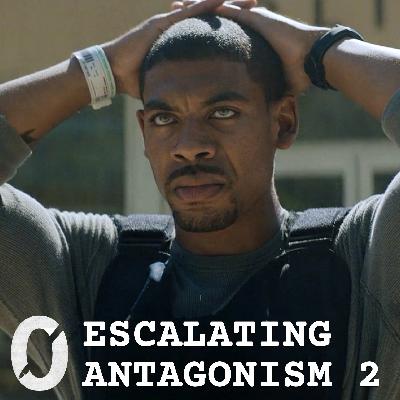
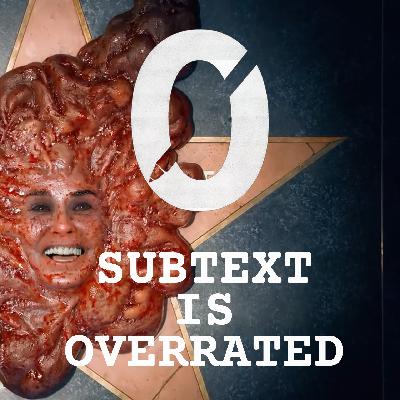
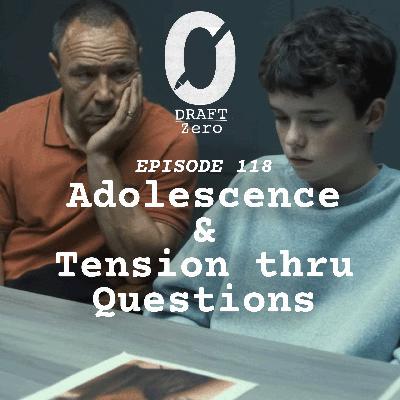

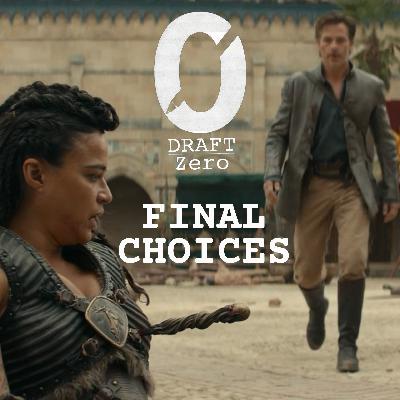
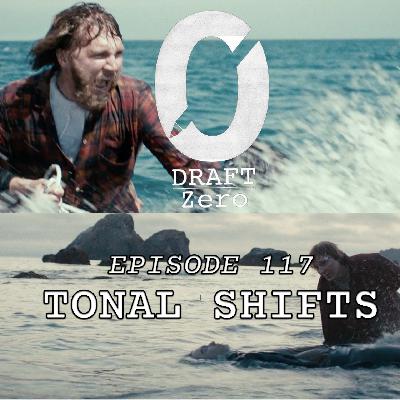
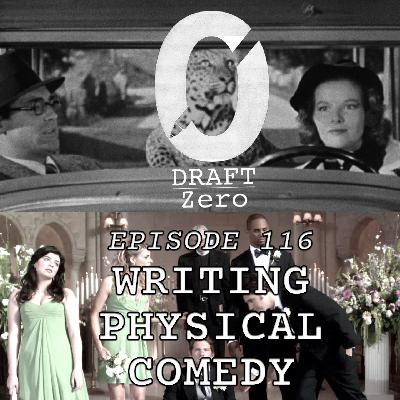

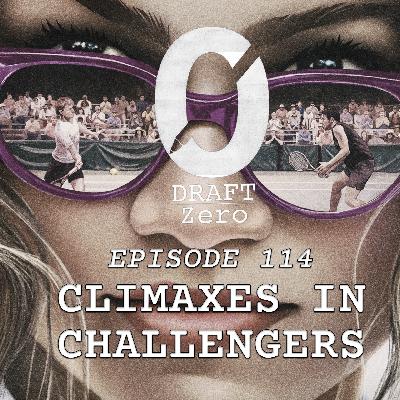
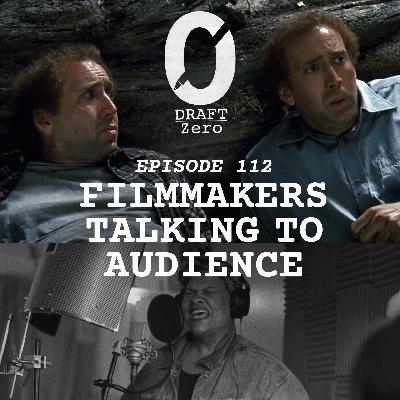


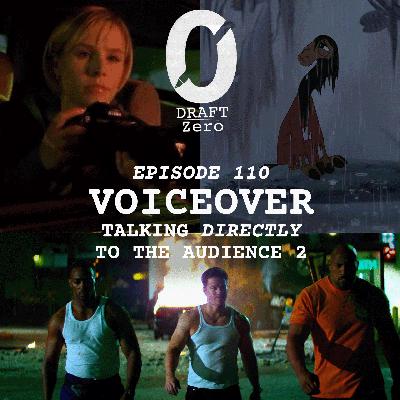
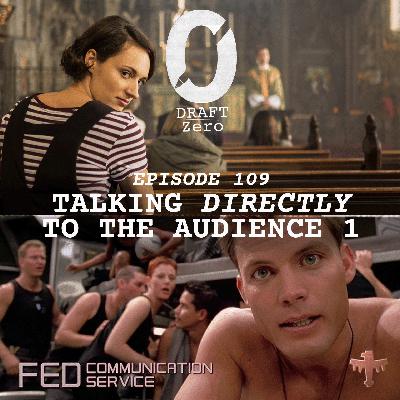


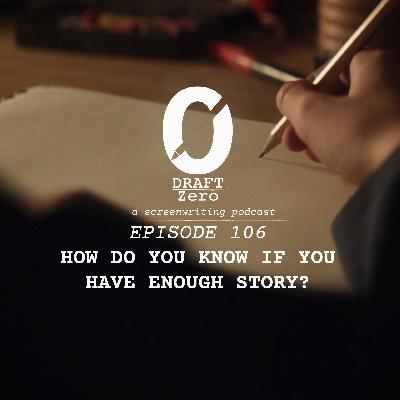
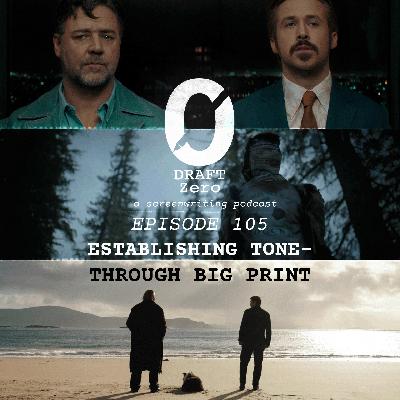
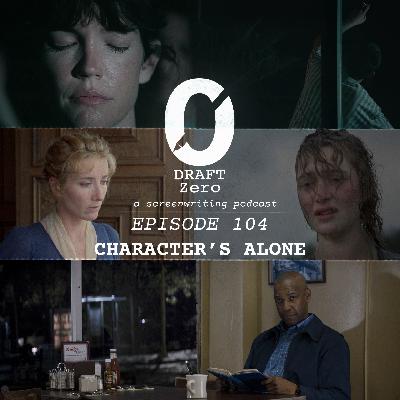



this is a really useful and thought provoking podcast. thanks guys!
Incredibly insightful and accessible for screenwriters and storytellers of any professional level. You'll improve your craft and organically gain motivation to write with every single episode.